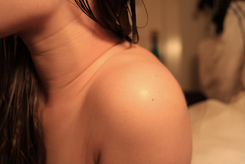- Home
- About Us
- TSPT Academy
- Online Courses
-
Resources
- Newsletter
- Business Minded Sports Physio Podcast
- Day in the Life of a Sports PT
- Residency Corner
-
Special Tests
>
-
Cervical Spine
>
- Alar Ligament Test
- Bakody's Sign
- Cervical Distraction Test
- Cervical Rotation Lateral Flexion Test
- Craniocervical Flexion Test (CCFT)
- Deep Neck Flexor Endurance Test
- Posterior-Anterior Segmental Mobility
- Segmental Mobility
- Sharp-Purser Test
- Spurling's Maneuver
- Transverse Ligament Test
- ULNT - Median
- ULNT - Radial
- ULNT - Ulnar
- Vertebral Artery Test
- Thoracic Spine >
-
Lumbar Spine/Sacroiliac Joint
>
- Active Sit-Up Test
- Alternate Gillet Test
- Crossed Straight Leg Raise Test
- Extensor Endurance Test
- FABER Test
- Fortin's Sign
- Gaenslen Test
- Gillet Test
- Gower's Sign
- Lumbar Quadrant Test
- POSH Test
- Posteroanterior Mobility
- Prone Knee Bend Test
- Prone Instability Test
- Resisted Abduction Test
- Sacral Clearing Test
- Seated Forward Flexion Test
- SIJ Compression/Distraction Test
- Slump Test
- Sphinx Test
- Spine Rotators & Multifidus Test
- Squish Test
- Standing Forward Flexion Test
- Straight Leg Raise Test
- Supine to Long Sit Test
-
Shoulder
>
- Active Compression Test
- Anterior Apprehension
- Biceps Load Test II
- Drop Arm Sign
- External Rotation Lag Sign
- Hawkins-Kennedy Impingement Sign
- Horizontal Adduction Test
- Internal Rotation Lag Sign
- Jobe Test
- Ludington's Test
- Neer Test
- Painful Arc Sign
- Pronated Load Test
- Resisted Supination External Rotation Test
- Speed's Test
- Posterior Apprehension
- Sulcus Sign
- Thoracic Outlet Tests >
- Yergason's Test
- Elbow >
- Wrist/Hand >
- Hip >
- Knee >
- Foot/Ankle >
-
Cervical Spine
>
- I want Financial Freedom
- I want Professional Growth
- I want Clinical Mastery
 A common shoulder pathology seen in the clinic is known as Subacromial Impingement Syndrome. Whether it be due to scapular dyskinesia, poor accessory motion, or whatever, we treat it the same. There are two mechanisms through which subacromial impingement occurs. 1) decreased subacromial space leads to compression of the tissues during abduction. 2) repetitive contact between the greater tubercle and the glenoid damages the tissues. Due to the multiple contributors to subacromial impingement, the treatment must be addressed in various methods. Some common impairments seen include: decreased motor control of the middle/lower traps, decreased motor control of the serratus anterior, decreased inferior accessory motion, poor scapular humeral rhythm, and of course, poor posture. An important component for good shoulder control includes proper usage of the scapular stabilizers. Some of the muscle tend to be overused, while others are under-utilized. To determine which muscles belong to, just observe the resting position of the scapula! The press-up and push-up plus have been shown to activate both the lower trapezius and serratus anterior greater than the upper trapezius. Prone flexion, one-arm row, and prone abduction activate the lower trapezius over the serratus anterior, while shoulder press and push-up plus activate the serratus anterior over the lower trapezius. The middle trapezius is activated more than the upper trapezius with prone abduction and one-arm row. It has been shown that exercise and home exercise programs have success in improving the symptoms of the patient, but the addition of manual therapy (i.e. mobilizations, STM) could potentially improve symptoms even more or faster. Of course scapulohumeral rhythm is of concern. Eccentric exercises of the rotator cuff have been shown to improve the patient's complaints as well. While other shoulder injuries do not particularly fall into the category of subacromial impingement, I usually include these treatments in my plan of care for many shoulder pathologies. Any time the shoulder undergoes limited motion, the inferior capsule has a tendency to become restricted. With inferior glides, you can help prevent that! And, of course, posture is an issue with almost every individual. Poor posture=poor scapular stabilization. Retraining of the scapular stabilizers can speed up the rehabilitation of your patient. References: Andersen CH, Zebis MK, Saervoll C, Sundstrup E, Jakobsen MD, Sjøgaard G, Andersen LL. "Scapular muscle activity from selected strengthening exercises performed at low and high intensities." J Strength Cond Res 2012 Sep;26(9):2408-16. Web. 08/26/2012. Başkurt Z, Başkurt F, Gelecek N, Özkan MH. "The effectiveness of scapular stabilization exercise in the patients with subacromial impingement syndrome." J Back Musculoskelet Rehabil. 2011;24(3):173-9. Web. 08/26/2012. Bernhardsson S, Klintberg IH, Wendt GK. "Evaluation of an exercise concept focusing on eccentric strength straining of the rotator cuff for patients with subacromial impingement syndrome." Clin Rehabil. 2011 Jan;25(1):69-78. Epub 2010 Aug 16. Web. 08/26/2012. Camargo PR, Avila MA, Alburquerque-Sendín F, Asso NA, Hashimoto LH, Salvini TF. "Eccentric training for shoulder abductors improves pain, function and isokinetic performance in subjects with shoulder impingement syndrome: a case series." Rev Bras Fisioter 2011 Nov 21. pii: S1413-35552011005000032. Web. 08/26/2012. Şenbursa G, Baltaci G, Atay ÖA. "The effectiveness of manual therapy in supraspinatus tendinopathy." Acta Orthop Traumatol Turc. 2011;45(3):162-7. doi: 10.3944/AOTT.2011.2385. Web. 08/26/2012.
0 Comments
Leave a Reply. |
Dr. Brian Schwabe's NEW Book in partner with PaleoHacks!
Learn residency-level content on our
Insider Access pages We value quality PT education & CEU's. Click the MedBridge logo below for TSPT savings!Archives
July 2019
Categories
All
|






 RSS Feed
RSS Feed